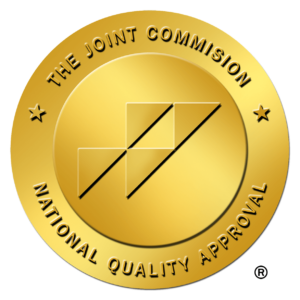It’s the perfect storm. Healthcare is driven by rapid evolutions in care delivery. Technology is the force behind these changes, and new digital tools are impacting the beginning of the clinical process—during training and education. One area of significant transformation is in virtual and augmented reality and how these tools help clinicians visualize treatments in new ways.
In the coming years, watch for augmented reality (AR) to continue changing how healthcare professionals receive training and education. This blog will discuss the applications of AR in healthcare training programs, such as simulating complex medical procedures, enhancing anatomy learning, and improving patient interaction skills. It will highlight the benefits of incorporating AR technology in training curricula, such as increased engagement, improved knowledge retention, and cost-effective training solutions. Additionally, it will explore potential partnerships or platforms that offer AR training solutions for healthcare organizations.
What is AR in Healthcare?
Augmented reality is a technology that overlays digital information, such as images, videos, or 3D models, onto the real world. Unlike virtual reality, which immerses the user in a completely digital environment, AR enhances the real world with digital elements. Healthcare devices use AR, including smartphones, tablets, and AR headsets. HealthTech magazine predicts significant growth in using these tools in the coming years. What are the benefits of AR for learning and healthcare education?
Enhanced Learning Through Immersion
One of the most significant advantages of leveraging AR in healthcare training and education is the immersive learning experience it offers. Trainees can interact with three-dimensional anatomical models, medical simulations, and virtual patients. This hands-on approach enhances understanding and retention of complex medical concepts and procedures.
For example, HealthTech reports medical students at the Johns Hopkins School of Nursing use AR to explore detailed 3D models of the human body, allowing them to visualize anatomical structures from various angles and deeply understand their interconnections. Surgeons can practice procedures in a risk-free virtual environment before performing them on real patients, refining their skills and improving patient safety.
Personalized Training
AR technology enables personalized training experiences tailored to the learner’s level of expertise and specific learning goals. Healthcare educators can create customized AR modules that adapt to the learner’s pace and performance. This personalized approach ensures that each trainee receives the appropriate level of challenge and support, optimizing the learning process.
Real-time Guidance and Feedback
HealthTech says orthopedic students at Massachusetts General Hospital use AR and receive real-time guidance and feedback during medical procedures and examinations. For instance, during surgery, an AR headset can overlay critical information, such as the patient’s vital signs, the location of specific anatomical structures, or step-by-step instructions for the procedure. This real-time support enhances precision and reduces the risk of errors.
Similarly, AR can simulate patient interactions, allowing healthcare professionals to practice communication skills, empathy, and bedside manner. Virtual patients can respond to trainees’ actions and questions, providing valuable feedback on their interpersonal skills.
Remote and Collaborative Learning
AR technology also facilitates remote and collaborative learning. Healthcare students and professionals can participate in virtual training sessions from anywhere, breaking down geographical barriers. Instructors can guide and assess trainees in real-time in different parts of the world.
Collaborative AR experiences enable healthcare teams to work together on complex cases or emergency scenarios. Interdisciplinary teamwork can be practiced and refined in a virtual environment, leading to better coordination and patient care in real-life clinical settings.
Continuous Learning and Continuing Medical Education (CME)
Healthcare professionals must engage in lifelong learning to stay up-to-date with the latest advancements in their fields. AR can revolutionize continuing medical education (CME) by providing easily accessible, engaging, and interactive content. Professionals can earn CME credits by completing AR-based modules, ensuring they remain current in their practice.
Challenges and Considerations
While AR holds great promise for healthcare training and education, it is essential to address challenges such as cost, accessibility, and data security. Implementing AR technology may require investments in hardware, software development, and training for educators. Ensuring that AR applications are accessible to all learners, including those with disabilities, is another important consideration.
Staying Ahead of Change with Bluebird Staffing
AR has the potential to transform healthcare training and education by offering immersive, personalized, and interactive learning experiences. As AR technology continues to evolve and become more accessible, it will play an increasingly vital role in preparing the healthcare workforce for future challenges. Healthcare organizations and educational institutions should embrace AR as a valuable tool for advancing the knowledge and skills of their professionals, ultimately leading to improved patient care and outcomes.
Bluebird Staffing is committed to staying ahead of healthcare’s evolution. Talk to our team today if you’re searching for a more effective hiring process driven by intelligent technology, great networks, and an expert recruiting team.



